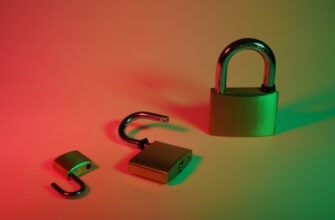Why Backing Up Your Ledger Wallet Is Non-Negotiable
Imagine losing access to your life savings because your hardware wallet failed or was damaged. For Ledger users, a proper backup is your ultimate safety net against device loss, theft, or malfunction. Unlike exchange accounts requiring KYC (Know Your Customer) verification, backing up your Ledger is a fully private, offline process. This tutorial eliminates third-party involvement, keeping your identity and crypto secure. No paperwork, no ID submissions—just pure self-custody.
KYC vs. Ledger Backups: Why Privacy Matters
KYC mandates identity verification for regulated services like exchanges. But your Ledger backup revolves around your 24-word recovery phrase—a master key generated offline. Since this process involves no intermediaries:
- Zero personal data exposure: No names, addresses, or documents required.
- No tracking: Avoid creating digital footprints tied to your wallet.
- Full autonomy: You control the backup without corporate oversight.
This offline approach aligns with crypto’s core ethos: decentralization and privacy.
Step-by-Step: Backup Ledger Without KYC
Time required: 15 minutes | Tools needed: Ledger device, pen, backup medium (paper/metal)
- Initialize Your Ledger: During setup, your device generates a unique 24-word recovery phrase. Write it immediately on the provided card.
- Verify Offline Display: Confirm the phrase appears only on your Ledger screen—never on a connected device or Ledger Live app.
- Transcribe Manually: Using indelible ink, copy words in order onto a fire/water-resistant medium. Never photograph or type them.
- Create Redundant Copies: Make 2-3 identical backups. Store separately in secure locations (e.g., home safe + bank vault).
- Test Restoration: Practice recovering a wallet using your phrase (via Ledger’s “Restore” feature) to ensure accuracy.
Fort Knox Storage: Best Practices
- Physical Media: Use cryptosteel or titanium plates for fire/water resistance. Avoid standard paper.
- Geographic Separation: Keep copies in different cities to mitigate localized risks (theft, natural disasters).
- Camouflage: Hide phrases in mundane objects (e.g., inside a book) rather than obvious safes.
- Share Securely: If disclosing to trusted parties, do so in person—never via email/messaging apps.
Disaster Recovery: Lost Device? Here’s Your Plan
If your Ledger is compromised:
- Obtain a new Ledger or compatible hardware wallet.
- Select “Restore Wallet” during setup.
- Enter your 24-word phrase exactly as backed up.
- Reinstall apps via Ledger Live to access coins.
Warning: Never enter your phrase into software wallets or websites—this invites theft.
FAQ: Backup Ledger Without KYC
Q: Does Ledger require KYC for backups?
A: Absolutely not. Backups are 100% offline—no identity verification, accounts, or internet needed.
Q: Can I use Ledger Live for backups?
A: Ledger Live helps manage apps/transactions, but never handles your recovery phrase. Backups are strictly device-manual.
Q: Is digital storage ever safe?
A: No. Cloud notes, photos, or encrypted files risk exposure via hacks or malware. Physical is paramount.
Q: How often should I re-backup?
A: Only if you generate a new recovery phrase (e.g., resetting the device). Existing backups remain valid indefinitely.
Q: What if I lose my phrase?
A: Funds are irrecoverable. Ledger cannot reset or access it—this is why meticulous backup is critical.








